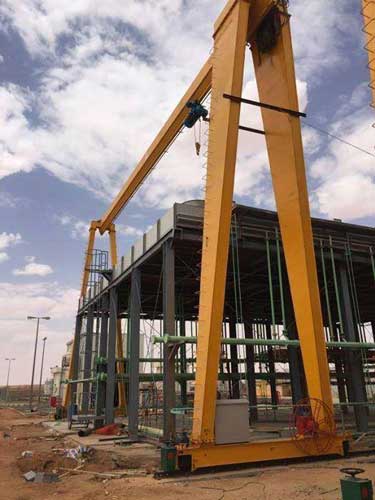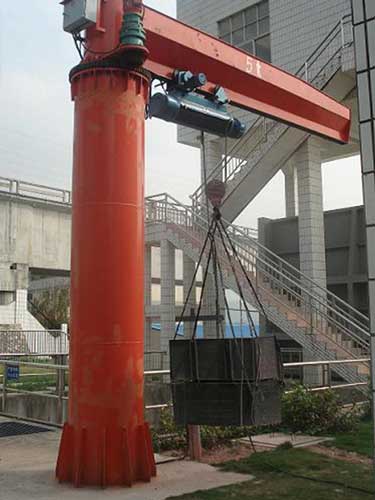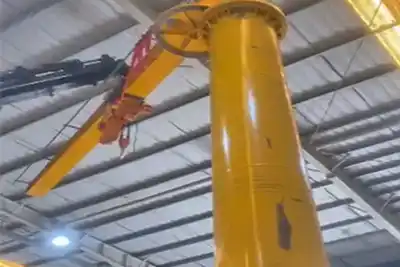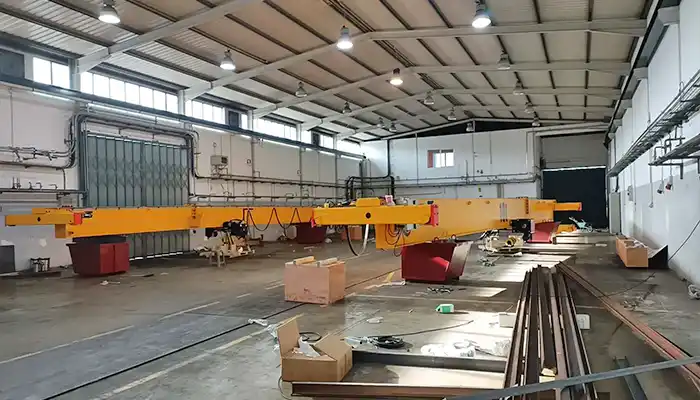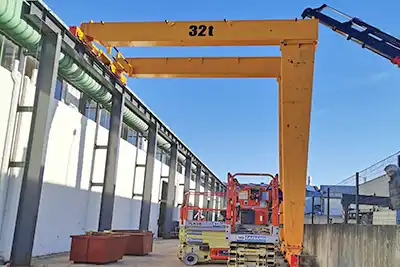Overhead crane for sale Kenya. With a focus on the Kenyan market, Yuantai Overhead Crane Kenya offers the best and most affordable electric overhead crane and hoist solutions to boost their company's production, efficiency, and safety. Continue reading to find out more about offering of types of overhead cranes, projects and cases , and services for you.
Different Types of Overhead Cranes For Sale Kenya
Single girder and double girder overhead cranes are the general types of overhead cranes we offer to customers in Kenya. To fulfill the unique needs of the customer, processed and bespoke crane designs can be manufactured based on their specifications and lifting requirements.
There are no two identical overhead cranes when it comes to specs and setups. For the comparable working environment and similar loads handling, the overhead crane design may be ideal for one application but might not be proper for the other. Therefore, the most economical method to increase productivity and streamline workflow is to choose the appropriate type of overhead crane for your application.
For your reference in choosing the appropriate overhead crane type for your application and facility, the terms single girder overhead crane, double girder overhead crane, top running overhead crane, and under running overhead crane will be defined and their differences will be illustrated. All of the mentioned types of overhead cranes here will be available in Kenya market.
The major types of overhead crane will be presented for you, which includes;
Yuantai Crane makes every effort to explain how each type of crane operates as well as the benefits and drawbacks of each type of overhead crane. In this way, you may find the best one for your application.
A single girder overhead crane or a double girder overhead crane configuration are the mos frequented mentioned. Simply put, the support structure that enables the trolley and hoist to travel side to side along the bridge is known as a bridge girder, or beam. Before lifting or lowering a weight, the trolley is utilized to properly position the hoist.
Single and double girder cranes are roughly equivalent in terms of sturdiness and longevity. What makes them different is the hook height, the maximum height your electric hoist can lift above the ground. Generally, the double girder overhead crane provides higher hook height since the electric hoist is mounted on top of the double girders rather than hung underneath the single girder.
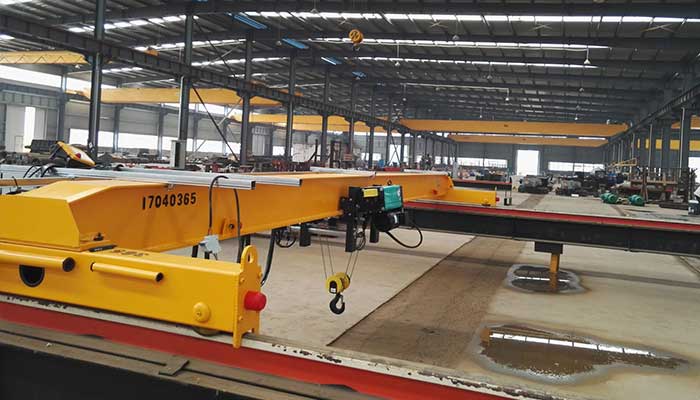
A single girder electric overhead crane is often made for lifts under 20 tons, spans under 31.5 meters, or requirements for crane services that fall into the A7 and A8 categories.
The overhead crane bridge is made out of a single girder beam that is supported by an end truck on each side. The electric trolley and hoist frequently move over the bridge's bottom flange. For the following reasons, the single girder electric overhead crane is less expensive:
- It only requires one beam girder to move the trolley and hoist.
- Lower freight costs and simple installation
- It is simpler to design a hoist and trolley than a double girder overhead crane.

The double girder electric overhead crane will be the first option when the lifts are greater than 20 tons, the span is greater than 31.5 meters, or the crane duty cycle is A7 and A8.
The bridge is made up of two girder beams, each of which is supported by an end truck or carriage. The electric trolley and hoist operate on tracks that are put on top of both bridge girders.
- For heavier-duty applications, when the lift is greater than 20 tons, the span is greater than 31.5 meters, or the crane duty cycle is A7 and A8, double girder overhead cranes are advised.
- When a crane needs to be specifically developed in terms of walkways, driver's cabs, magnet cable reels, and other factors, a double girder bridge crane is chosen.
- What's more, double girder electric overhead crane offers more lifting height with the top running crane design.
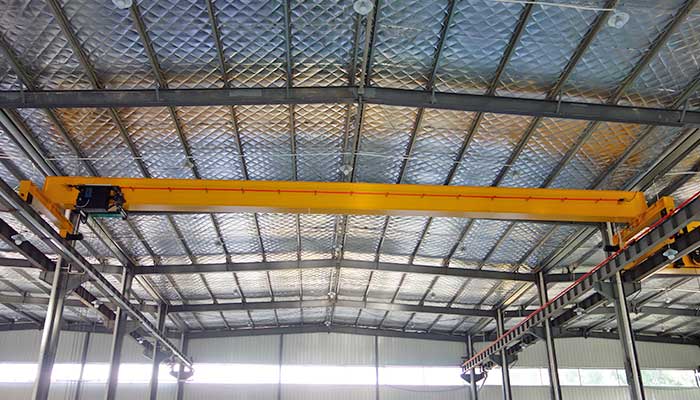
Top running overhead crane Kenya
Top running overhead cranes are very adaptable and versatile and can be used for both small- and large-capacity lifts.
The top running bridge crane can be utilized to handle lifts with small capacities all the way up to extremely big capacities without having a limiting capacity. Top running overhead cranes have a rail put on top of each runway, and the wheels roll along the rail as opposed to the runway beam's bottom flange. The initial choice for transferring exceptionally high goods is to use a top running overhead crane, which is supported by the building structure, runway support columns, or sister columns.
Top running bridge cranes can be created with a single girder or two girders:
Single Girder Top Running Overhead Crane :
- Load Capacity: .25 – 20 tons
- Span: Under 20 m
- Crane duty service: Light
- Low deadweight
- More overhead space
- High speed
- Lower production cost / lower overall price
Double Girder Top Running Bridge Crane Benefits:
- Load Capacity: 20-320 tons
- Span – Over 20
- Crane duty service – Heavy
- Ideal when extremely high hook height is necessary
- Better hook height
- Most overhead space
- More lift
- High speed
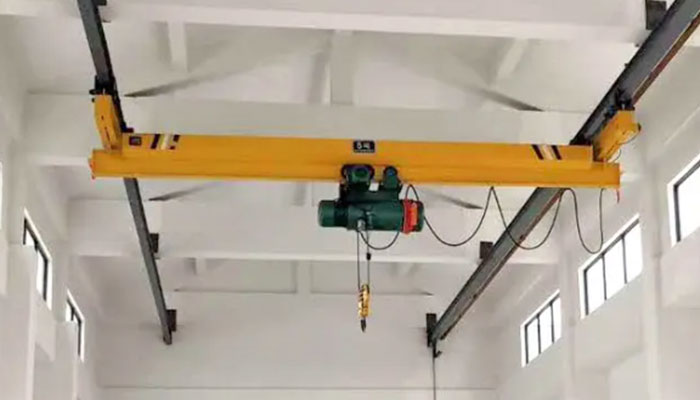
Under running bridge cranes, which are also known as under hanging overhead cranes, are typically supported by ceiling or roof structures and are utilized for lighter service and lesser capacity applications.
Under running bridge cranes are also known as under hung cranes since the crane wheels are supported by the bottom flange of the overhead crane runway beams, which also served as the crane rail. Because under running cranes are supported by the ceiling trusses or the roof structure, this sort of overhead cranes can maximize the utilization of the floor area in your building.
The cost of the underrunning electric overhead cranes may be reduced by using an existing support structure (if sufficient) or operating on a newly-engineered support structure.
Features of underhung overhead cranes
- Designed for smaller capacity / lighter service applications
- Utilize the building's breadth and height to their fullest extent when they are supported by roof or ceiling structures.
- Due to the bridge of the overhead crane and the electric hoist hanging beneath the runways, the hook height is lower than the top running design.
Comparison of Top running overhead crane vs. Under rung overhead crane
If you want to comprehend the distinct characteristics between overhead cranes, you need understand what a top running crane or an under running crane is.
- The beam bridge travels along the top of the runway beams on rails supported by a top running crane.
- On an under running crane, also known as an underhung crane, the crane wheels travel along the lower flange of the lower beam while the beam bridges are supported by the bottoms of the runway beams.
Overhead gantry cranes also can be classed into different crane types, in terms of gantry designs, including:
Single girder and double girder gantry crane - Unlike overhead crane, an overhead gantry crane runs on rails either embedded in or on the top of floor or ground structure with the gantry legs at both end of main girder. The gantry bridge girders are just like that of the overhead crane to support the electric trolley and hoist.
Adjustable Gantry Cranes
The adjustable gantry crane is a light duty gantry crane. In warehousing applications, adjustable gantry cranes are used to move materials through aisles, entrances, around impediments, and over or under obstructions. In fabrication and welding industries, for example, an adjustable gantry crane is frequently used to raise items into place.
Portable Overhead Gantries
Portable gantry cranes can be used for loads handling with capacity up to 10 ton. A portable gantry crane may be easily replaced or moved, and it has quick, simple transportation to and from a job site.
Electric Jib cranes come in a wide variety of designs and crane types. The light jib cranes come in a variety of lifting capacities, heights, and spans, and can be freestanding or mounted on walls or columns. The rotating jib cranes have the advantages of reducing space, being affordable, and being able to rotate between 180° and 360° while navigating or transporting objects for assembly inside a smaller radius.
Different Types of Jib Crane Systems
- Freestanding Jib Cranes
- Foundationless Jib Cranes
- Mast Type Jib Cranes
- Wall-Mounted Jib Cranes
- Articulating Jib Cranes
Which types of jib crane is most appropriate for your application? We'll address the following queries:
- What kind of tasks or operations will the jib crane perform?
- What height clearances or spans are necessary in this work area?
- Any available floor, wall, or ceiling supports for mounting? Or is a separate crane required?
- Any further unique choices or factors?
- What is the available budget for the installation and jib crane system?

Monorail crane
What is a monorail crane? A trolley or hoist carried from the lower flange of an I-beam serves as the basic component of a monorail crane, which is used to move weights along straight or curved tracks.
In a production or assembly line, a monorail crane is used to transport loads using a trolley or hoist along a single path. Monorail cranes operate along an I-flat beam's bottom (flange), which is typically integrated into the ceiling construction. The configuration of a support structure can also be used in the construction of this kind of overhead crane.
Depending on the rail configurations, loads can be transported using a monorail crane in a straight line, or with branches, bends, switches, and elevation changes. For lifts without the need for the side-to-side trolley movement offered by the bridge in an overhead crane or gantry crane, monorail cranes are created. For many assembly lines and production applications, monorail cranes are a flexible and affordable alternative.
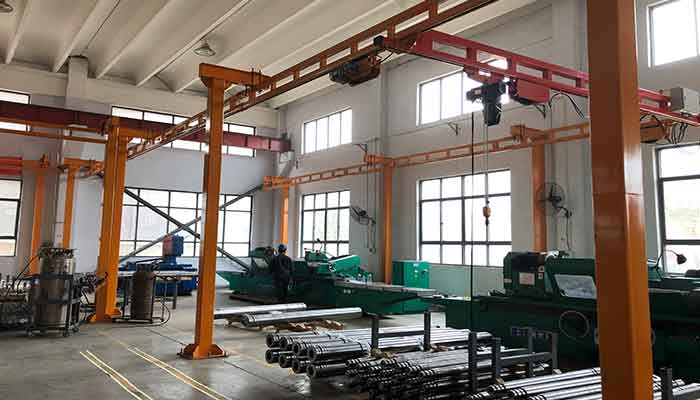
Workstation crane
Workstation cranes are made to move objects with little effort in a compact workspace. Workstation cranes are lighter-duty systems that can lift and position objects repeatedly in capacities ranging from 0.25 tons to 2 tons, enhancing worker productivity and streamlining work processes.
Workstation cranes can be built and installed using a modular design, providing considerable flexibility without the need for an existing supporting structure.






